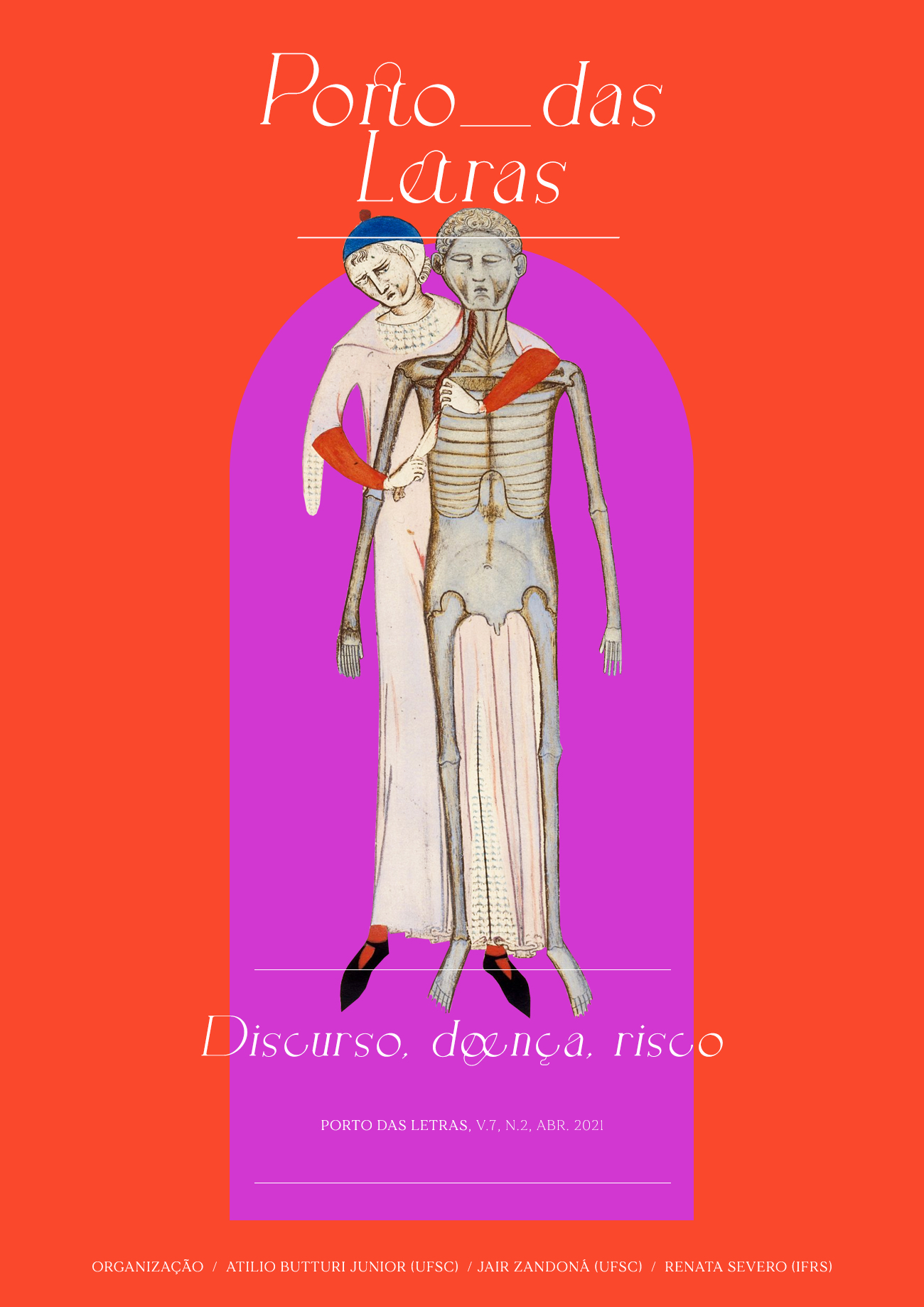O vírus nos ronda: metáforas sobre vírus e sobre corrupção
Keywords:
Metáfora; Corrupção; Vírus; Aspecto verbal; Política da eternidade.Abstract
In this article, we analyze the metaphors used to depict viruses and corruption. We argue that these metaphors are rooted in a perception of time as unbounded. Metaphorically, both the events of the spread of the virus and the spread of corruption are taken as incremental, iterative and atelic. This representation of time is expressed by propagation in space, in the case of metaphors for viruses, and directly by the imperfective verbal aspect, in the case of metaphors for corruption. We refer to the concept of politics of eternity (SNYDER, 2018) to explain the role of the perception of time in the way of apprehending social events. The unfolding of social facts is circumscribed by a view that is focused on the stages of the event but is unable to consider the whole situation in its temporal and spatial boundaries.
References
COSTA, S. O aspecto em português. São Paulo: Contexto, 1990.
ELIE, P. (Against) virus as metaphor. The New Yorker, 2020.
FORSBERG, P; SEVERINSSON, K. Exploring the virus metaphor in corruption theory: Corruption as a virus? Ephemera, Vol. 15, N. 2, p. 453-463, 2015.
FOSSILE, D. Valores aspectuais do português brasileiro e do alemão: uma proposta de síntese. In: MOURA, H; MOTA, M; SANTANA, A. (orgs.). Cognição, Léxico e Gramática. Insular: Florianópolis, 2012. p. 47-93.
FUKUYAMA, F. The end of history? The National Interest, n. 16, pp. 3-18, 1989.
GIVÓN, T. Syntax. An Introduction. Vol. 1. Amsterdam: John Benjamins, 2001.
LAKOFF, G; JOHNSON, M. Metáforas da vida cotidiana. Tradução de Mara Zanotto et al. São Paulo, EDUC/Mercado de Letras, 2002.
LANGACKER, R. An introduction to cognitive grammar. Cognitive Science, Vol. 10, N. 1, p. 1-40, 1986.
LOPES DA SILVA, F. Sadopopulismo: De Pútin a Bolsonaro. Florianópolis: Insular, no prelo.
____. Um grito parado no ar: o proferimento ‘Lula Livre’ como expressão da política da eternidade. Revista da ANPOLL, v. 1, n. 48, p. 124-135, 2019.
MOURA, H. Relações paradigmáticas e sintagmáticas na interpretação de metáforas. Linguagem em (Dis)curso, Tubarão, Vol. 7, N. 3, p. 417-452, 2007.
_____. Desfazendo dicotomias em torno da metáfora: Revista de Estudos da Linguagem, Vol. 16, N. 2, p. 179-200, 2008.
_____. O domínio cognitivo da imperfectividade e as metáforas sobre corrupção no Brasil. Artigo submetido, 2020.
PINKER, S. Do que é feito o pensamento. A língua como janela para a natureza humana. Tradução de Fernanda Ravagnani. São Paulo: Companhia da Letras, 2008.
SNYDER, T. The road to unfreedom. Russia. America. Europe. Nova York: Tim Duggan Books, 2018.
_____. Road to Unfreedom: Democracy, Neofascism, and the Importance of Language. Conferência proferida na American Academy, em Berlim, Alemanha. 2019. (1h48min24s).Disponível em: <https://www.youtube.com/watch?v=VHDdzJXM4oY&t=1776s>.
SONTAG, S. Illness as metaphor. New York: Farrar, Straus e Giroux, 1978.
_____Aids e suas metáforas. Tradução de Paulo Henriques Britto. São Paulo: Companhia das Letras, 1989.
SULLIVAN, K. Frames and constructions in metaphoric language. Amsterdam: John Benjamins, 2013.
TRAVAGLIA, L.C. O aspecto verbal no português: a categoria e sua expressão. Uberlândia: EDUFU, 1981.
VAN REGENMORTEL, M.H.V. The metaphor that viruses are living is alive and well, but it is no more than a metaphor. Studies in History and Philosophy of Biological and Biomedical Sciences. No 59, p. 117-124, 2016.
Downloads
Published
How to Cite
Issue
Section
License
Os autores concordam com os termos da Declaração de Direito Autoral, que se aplicará a esta submissão caso seja publicada nesta revista (comentários ao editor podem ser incluídos a seguir).

